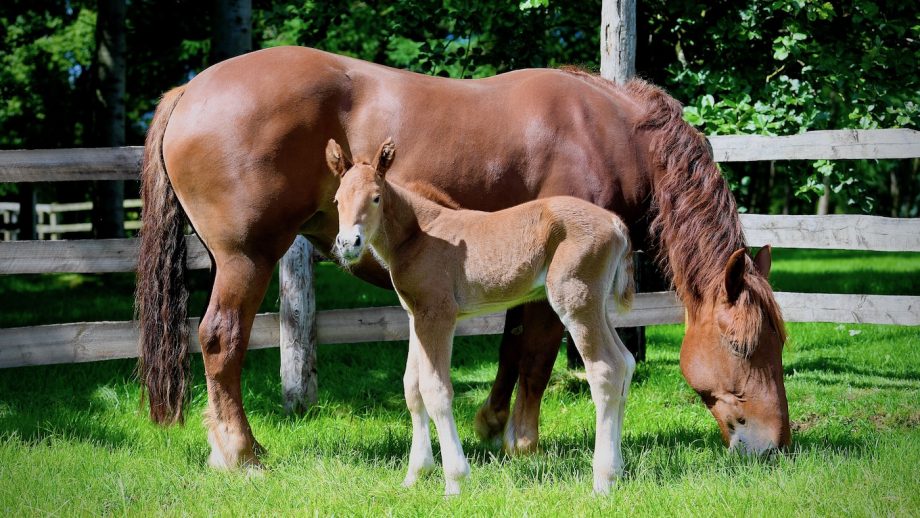This is not fake news, experts have warned: our rare native breeds will disappear before our eyes if we do not act now. H&H hears what measures are being taken and how science can help save our equine heritage
WE have to act now, if we want to save our equine heritage – and we have a range of scientific weapons in the fight for our rare breeds.
This was the topic of discussion at the first of two webinars held in advance, and as part of, the 2021 National Equine Forum, on 13 January.
With the title “Just in Time – Using Science to Save our Breeds”, speakers covered the issues facing our endangered native horses and ponies, and how scientific advances are being, and can be, used to secure their future.
“The overall message is that there’s serious concern, but there are things we can do,” said Tim Morris, vice-chairman of the Rare Breeds Survival Trust, as he introduced the speakers.
Stallion AI Services founder Tullis Matson, who has worked extensively on preserving endangered breeds and wildlife, looked at the wider context first; that the world is facing its sixth mass extinction, with hundreds of land species at risk of being lost.
“This isn’t fake news,” he said. “Extinction is normal in evolution but we’re now in freefall and we’re going to see a lot of species disappearing if we don’t do something. And it’s not just wild and exotic species; this is happening here in the UK with our native horse breeds, right in front of us.
“There are 14 equine breeds native to the UK; 12 are rare and five of those are critically endangered. We have to do something.”
Extinction vortex
Tullis discussed the extinction vortex; the state caused by inbreeding and lack of genetic diversity that means populations decline to the point of no return. This can be beaten by strategic breeding, “like the Tinder of the horse world”, Tullis said, to match mares with appropriate stallions.
There are many ways now of persevering genetic material, Tullis said. If colts or stallions with important genes die or are castrated, semen can be extracted from the testicles and stored. Female gametes can be extracted from mares and stored, and, using a process called intra-cytoplasmic sperm injection (ICSI) a single sperm can be injected into the egg to create an embryo, which can then also be frozen.
He also cited tissue-banking, referring to the Przewalski’s horse colt born in the US last year, having been cloned from genetic material stored 40 years beforehand.
“This really can help, but we need to store the material now,” he said. “We stand at a pivotal time for the survival of many species and our rare breeds, and we need to do this not just for our future, but for future generations.”
Weatherbys general studbook director Simon Cooper spoke about inbreeding in thoroughbreds, who are all descended from three foundation sires, and what is being done to combat it.
He said that as breeding in thoroughbreds is for performance, there is a “survival of the fittest” outcome, and added that the rule of natural covering only was put in place to combat inbreeding.
And although the breed’s inbreeding coefficient, which measures the degree of inbreeding, is lower than rare breeds such as the Clydesdale, it is higher than more common types of horse – and the global population of thoroughbreds is decreasing, with 123,000 foals born 16 years ago and only 88,000 in 2018 with a resulting drop in genetic diversity.
There has also been a bigger decrease in the number of stallions than the number of mares, which means males covering more females, and again less diversity.
He said measures are being taken, such as leading global studbook authorities working together, limits introduced in some countries to the number of mares a stallion can cover and gene analysis to monitor diversity.
“In all of this, what we must consider first is what’s best for the horse before what’s best for the industry,” he said.
Andy Dell, of the Cleveland Bay Horse Society, spoke of the Sparks programme, which has been in use for 16 years, since the society digitised its records and saw a “disturbing” increase in inbreeding.
The system is based on mare- and stallion-based data sheets, which in turn are based on genetic analysis. These calculate the mean kinship; the relationship between any one animal and another, and the potential inbreeding from any mating. Each match is ranked from green, a mating to be encouraged, to red, which should be avoided.
Dr Dell said: “You can’t breed by numbers alone but this is one tool in the breeder’s toolbox. It leaves breeders in control, to make choices good for themselves and good for the breed.”
He added that since Sparks was introduced, the increase in inbreeding has reduced almost to zero, and the population of Cleveland Bays is now far more viable.
“Although these breeds are endangered, they do still have a future,” he said.
Dr Dell added that change is as much about managing people as managing horses. Breeders must be brought on board, while breed societies should collect and analyse data then put plans in place to manage and monitor.
You might also be interested in…

How a cloned Przewalski’s foal could help save species from extinction *H&H Plus*

‘Beacon of hope’ for endangered breed as new tech leads to filly’s birth
‘The birth of this foal marks a major step towards securing the future of the Suffolk horse and all other

Your breed needs you: push to save our rare horses *H&H Plus*

Genetics advancement means winged horses ‘not impossible’, experts agree *April Fool*

All in a day’s work: The semen collector *H&H Plus*
Josh Steer on helping to preserve rare breeds, working with Big Star and why there is never a dull day

